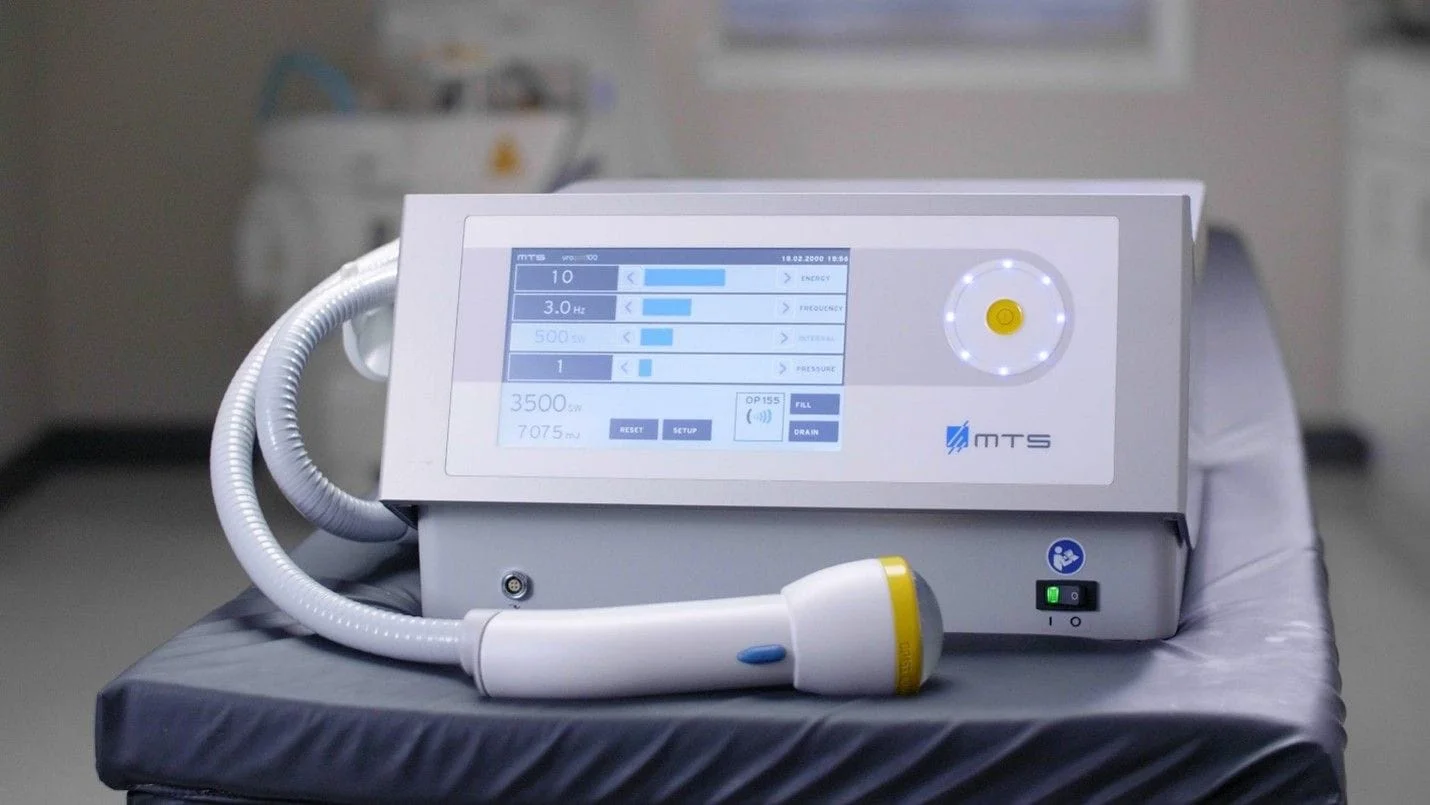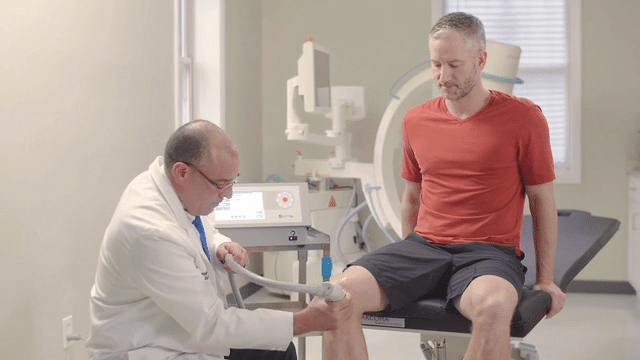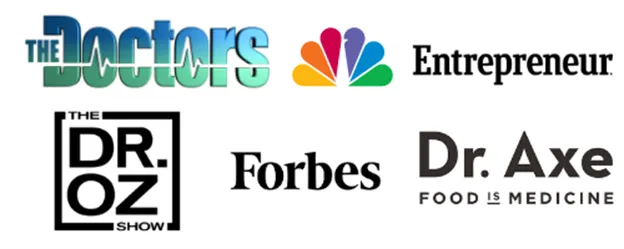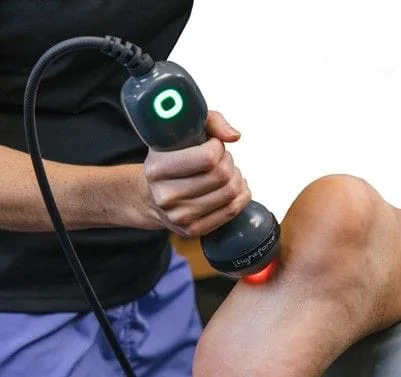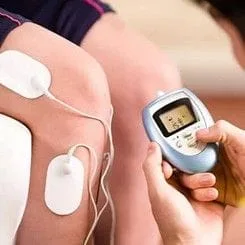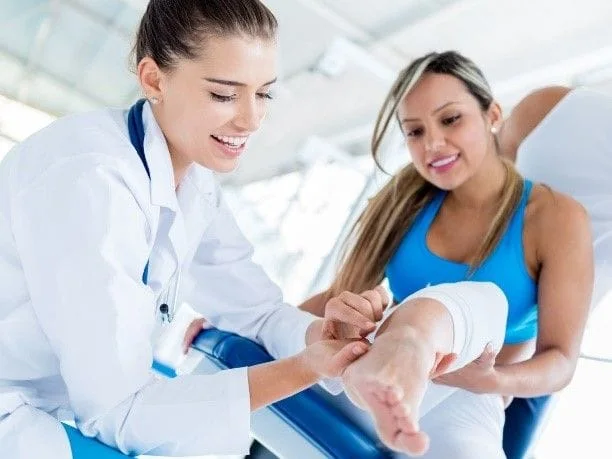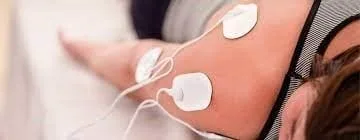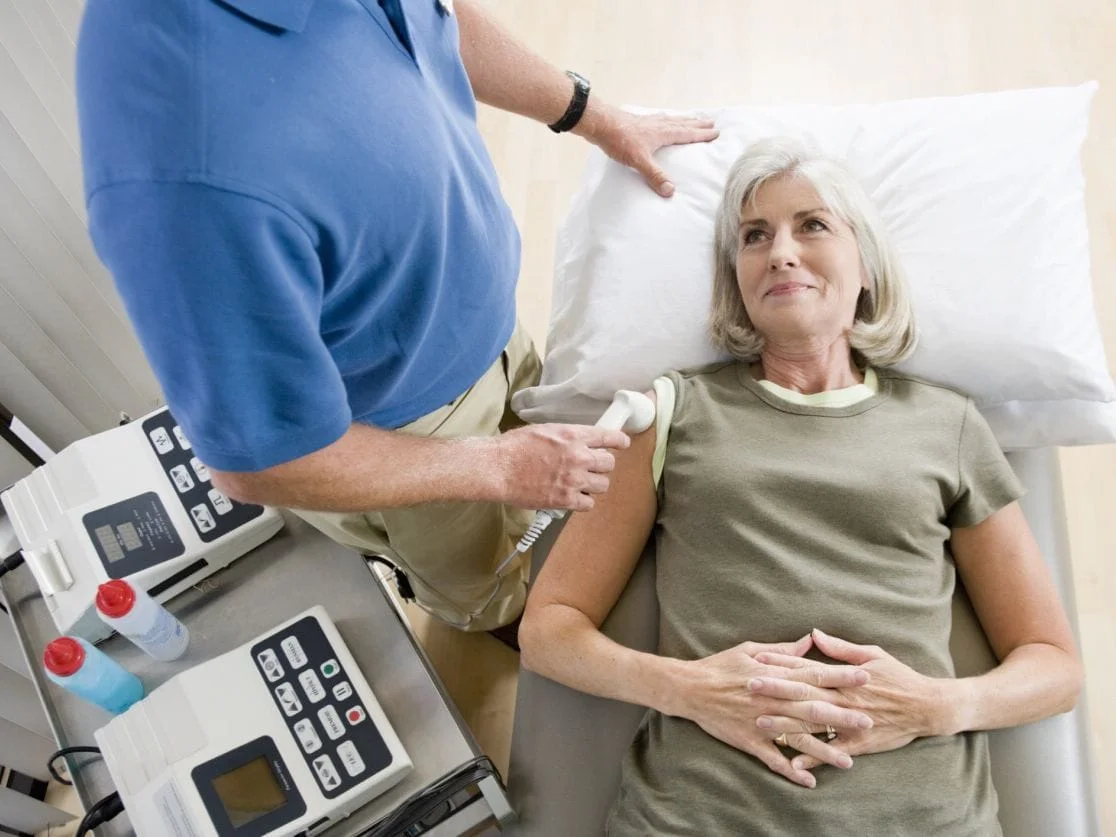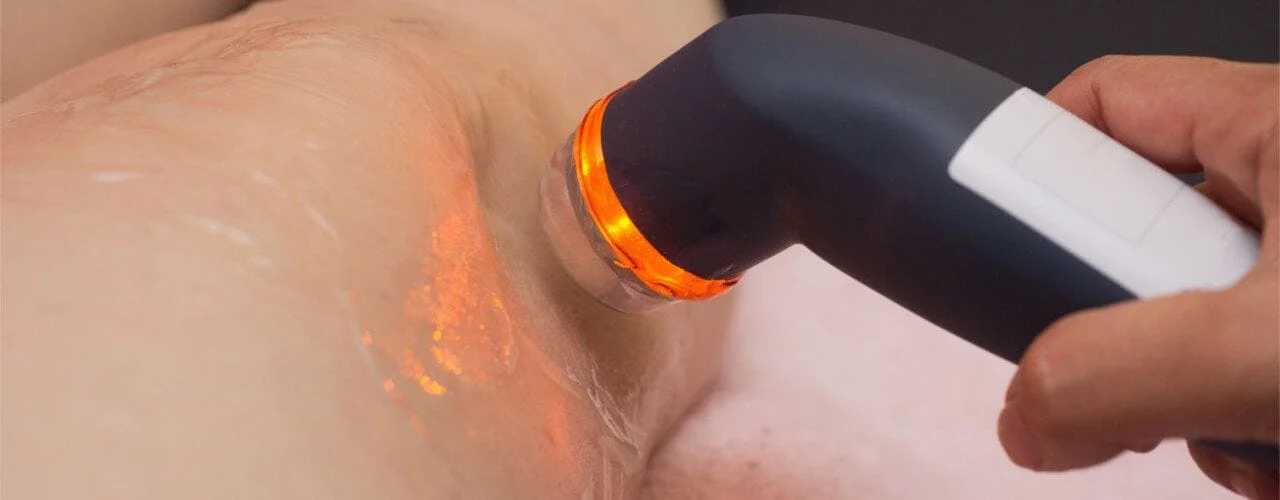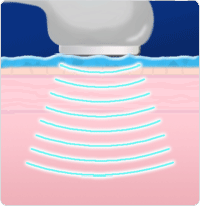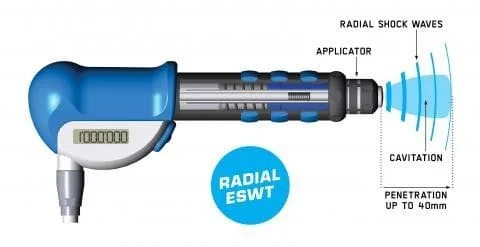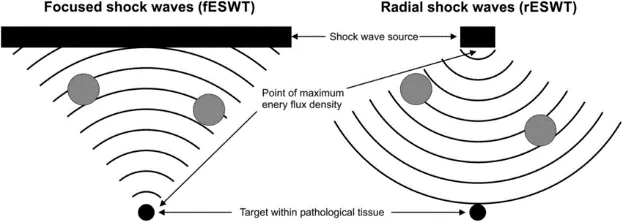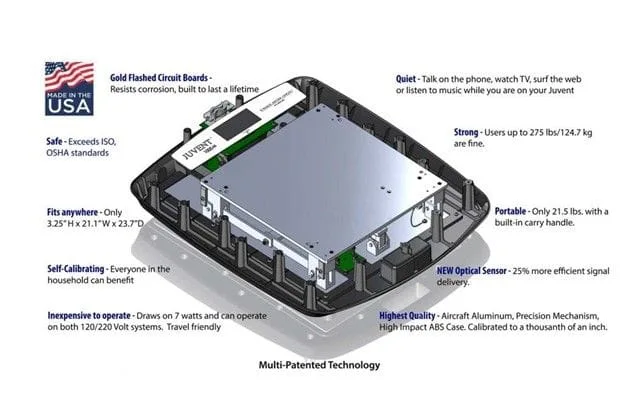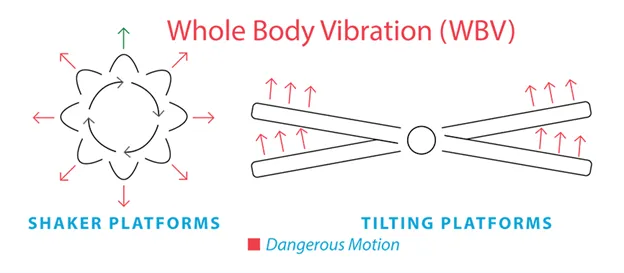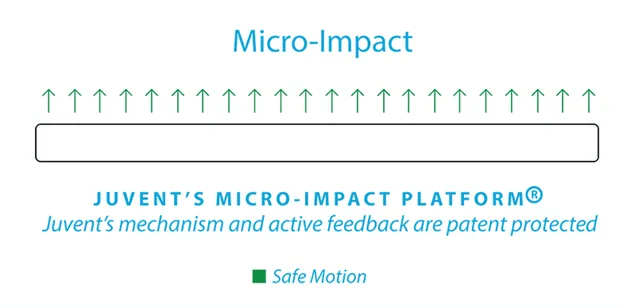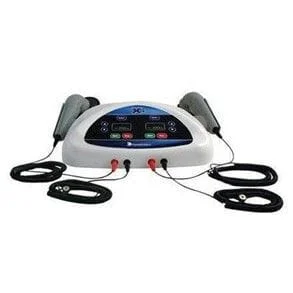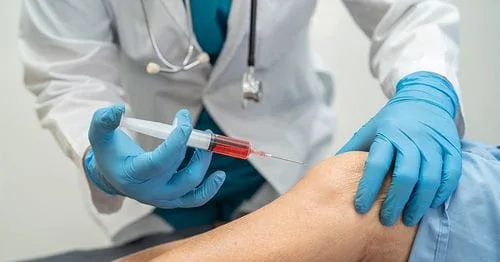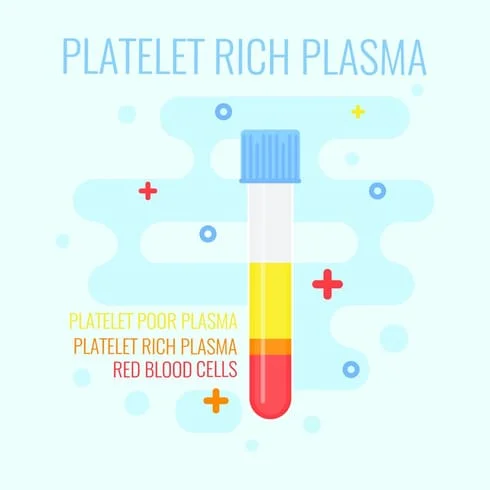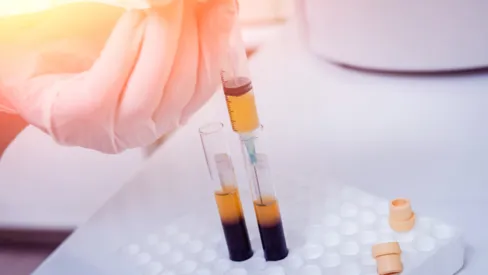At Multicare Health Clinic, we offer many different non-surgical solutions to treat Arthritis and Chronic Pain. See below to learn about the treatments we currently offer.
| SoftWave Therapy Physical Therapy Laser Light Therapy Iontophoresis Phonophoresis Radial Pulse Wave Juvent | Soft Tissue Oscillation Therapy STOT PRP (Platelet Rich Plasma) PEMF (pulsed electro-magnetic field) Gen Visc (Hyaluronic Acid Self v.s Chicken) Brace Unloading Cortisone Glucocorticoid Steroid with Lidocaine |
SoftWave Therapy Tissue Regeneration Therapy (TRT)
SoftWave Therapy – TRT OrthoGold 100 is an exciting breakthrough option in the field of regenerative medicine. This treatment is clinically proven, nationally recognized, and FDA cleared with a high success in clinical studies.
Additionally, SoftWave Therapy is..
- Utilized by professional sports teams (Cleveland Guardians, Brooklyn Nets, NY Giants, LA Lakers)
- Utilized by top medical institutions.
- Top choice of many sports legends, active and retired.
- Has helped thousands heal and recover in record time.
- 100% atraumatic to tissue and cells
- Near-immediate pain relief in some conditions
- Sustained blood flow improvement.
- A wave with a delivery zone thousands of times larger than focused or planar designs.
- Demonstrably more efficient and effective.
- Typically, 5-6 applications or fewer are needed.
- Real-time biofeedback provides precision guidance of application to the problem origin areas. No need for imaging or trigger point references.
- Transformational vs. Incremental.
- The only Unfocused Electrohydraulic ESWT available in North America, and it has FDA 510(k) clearance.
What is SoftWave Therapy?
The SoftWave tissue regeneration technology (TRT) machine delivers the most effective extracorporeal shock wave therapy (ESWT) available and approved by the FDA for the treatment of injuries and degenerative ailments. This treatment is non-invasive and highly effective at treating chronic pain and degenerative conditions. During a TRT treatment, high energy shocks are delivered to painful, injured, degenerated areas of the body. This stimulates healing and tissue regeneration. During this process, blood circulation is improved, and stem cell activity is initiated to enhance the body’s ability to heal and regenerate damaged tissue. Beneficial effects of this treatment can often be seen as early as one or two treatments. This non-invasive treatment can improve a person’s quality of life by eliminating pain and promoting mobility.
Extracorporeal shock wave therapy (ESWT) in orthopedics and traumatology is still a young therapy method. In the last few years, the development of shock wave therapy was very fast and successful. Meanwhile ESWT has gained acceptance within the orthopedic community. Today physicians have an overview of several ten thousand treated patients worldwide.
Although the healing mechanism of ESWT for treatment of the established indications like epicondylitis or heel spur is not completely understood, ESWT has changed medical therapy substantially. Advantages of ESWT are avoidance of surgeries, safety, and effectiveness. Compared to open surgery the costs of the ESWT are very reasonable. But nevertheless, it's necessary to improve the basic understanding of the biological and medical effects of shock waves in cooperation between institutes, hospitals, physicians, societies, and manufacturer of ESWT devices.
How does SoftWave Therapy work?
Shock waves are specific acoustic waves, which accompany our daily life without being noticed. The cracks of thunders, bangs of explosions or noise of applauding crowds are typical examples of shock waves. Earthquakes and collapses of cavitation bumbles generate shock waves. An airplane, which breaks the sound barrier, generates a very loud bang, which can lead to the jingle of glasses in a cupboard, the shock wave has transmitted energy from the airplane to the glasses.
Using heat and light, the Orthogold 100 produces electro-hydraulically produced acoustic soundwaves high- and low-pressure clap like thunder produced with a lightning bolt of high pressure and low pressure coming together, each one with different intensities and frequencies that creates the shearing force on the cell membrane in an instant to change its permeability to help get nutrients in and waste products out. Exosomes traveling in and then therefore resonant stem cells. It also prohibits inflammation; it releases cytokines and interluken-10 (therefore for 17 hours there is a decrease in pain and inflammation and increase in range of motion). But the true healing is 8-10 weeks later (research shows the biggest production of stem cells and migration to treated area) And just 2 weeks later during the 10th-12th week after treatment, there is neovascularization (improved blood supply).
Additionally, not only is this Softwave machine used for treatment, but it also has diagnostic feedback in which the “origin of pain” can be precisely identified, serving an invaluable tool for proper treatment. This feedback mechanism allows us to know exactly where the problem originates. With SoftWave therapy, we have been able to find trigger points on the body that we would not normally find.
5 to 6 sessions are the initial protocol for a single joint injury.
SoftWave is unique, patented, and profound. The patented unfocused electro-hydraulic design of the TRT/MTS SoftWave device brings unique and profound advantages for healing and recoveries in the human body:
What are some of the conditions the TRT machine can treat?
Ankle Pain
Foot Pain
Achilles Tendon Injuries
Plantar Fasciitis
Back Pain
Neck Pain
Hamstring Pain
Knee Pain
Shoulder Pain
Arthritis
Elbow Tendonitis
Wrist Pain
Hand Pain
TMJ
Sports Related Injuries
Muscle Pain
Overuse Injuries
Tinnitus
Trigeminal neuralgia
Pelvic Pain
What results are expected from TRT Treatment?
For many, the beneficial effects of a TRT treatment can be seen after only one or two treatments. It is not uncommon for patients to report a reduction in pain immediately after a treatment. In other cases, it may take more treatments to achieve the desired therapeutic effect.
The treatment results are generally long lasting. Many do not need follow up treatments once a treatment protocol has been completed. In more complicated cases, some people may need to have annual or bi-annual maintenance treatments.
TRT FAQs
How are treatments performed? Gel is applied to the area being treated. An applicator that delivers the shock waves is applied to the treatment area and soft waves are delivered.
Does it hurt? When shocks are delivered to areas where there is no tissue damage, no discomfort is felt. When shocks are delivered to an area with tissue damage, some discomfort is felt for the length of the shock, but it is not sustained beyond the shock delivery.
How many treatments are needed? The number of treatments needed depends on the condition being treated. In many cases, only 3-5 treatments ae needed, but in some cases, more can be necessary
How long is a treatment session? Most sessions take 10-15 minutes.
What are the possible side effects? While a person may experience an increased energy level the day of a treatment, there are virtually no negative side effects. Patients can return to work or school immediately after a treatment. There is no down time.
What do I wear for my TRT treatment? Wear clothing that is comfortable or that can be easily moved to expose the area needing treatment?
What are the contraindications for TRT? TRT is contraindicated for those with a cardiac pacemaker, those who are pregnant or with active cancer, those taking NSAIDs, and those that have corticosteroids injected within the last month.
Shockwave History
Follow this link to see the history of Shockwave Technology - https://www.shockwavetherapy.o...
All Shock Wave Therapies are NOT Created Equal
It’s best to refer to this device as “SoftWave Therapy” as there is much confusion regarding “Shock Wave Therapy.” There are many manufacturers that produce devices that do not actually create a “Shock Wave” yet are marketed as such. This unfortunately has created confusion in the marketplace, as well as turned off many to the technology since the mislabeled devises produce inferior results.
What are the two different types of Shock Wave Therapies?
Extracorporeal Shock Wave Therapy (ESWT)
The word “Extracorporeal” denotes shock waves that are generated externally or outside the body.
1. Focused ESWT:
This type relies on microtrauma to the tissue, has a very small treatment area and requires many applications over weeks/months at time.
Within Focused ESWT, there are three ways to produce the wave:
- Electrohydraulic: Of the 3 methods, it is demonstrated to be the most efficient and effective
- Piezoelectric: Focused and Focused/Planar. Very little published science, typically many applications needed
- Electromagnetic: Scientifically shown not to have enough energy to produce an actual shock wave, little published science, many applications needed
2. Unfocused ESWT (SoftWave Therapy).
- TRT owns the patents for unfocused ESWT in North America and utilizes the electrohydraulic method to generate the waves. It is created by a combination of light, heat, and an electro-hydraulically produced sound that combines to create a true “shockwave.”
- It is non-traumatic to tissue or cells (causes no microtrauma or damage to any tissue)
- The treatment zone is thousands times larger than focused or planar devices, due to its large “unfocused” applicator head
- Scientifically validated to elicit a strong anti-inflammatory effect and to recruit/activate endogenous stem cells, to vascularize tissue, promote healing, and to kill off pathogens.
Devices that Market Under Shock Wave that are NOT:
There are only these 2 main categories of shock wave therapy, focused and unfocused, in which Radial Pulse Wave or Ballistic Therapy Devices are NOT one of them. But let’s first review why this is.
Radial Pulse Wave or Ballistic
- They do NOT produce a true “shock wave” as defined by physics. The type of energy that it creates is a sound wave and they work on a different principle from shock wave therapy. They are also comparatively limited to what they can treat.
- Radial Pulse devices have been incorrectly referred to as “shock wave” for so long that it has stuck, though it is technically not correct.
Patient Reviews
Terri (Knee Pain)
"Do you know how good it feels to have no pain? Amazing. So, if you're in pain and need relief, come and try this. It’s so well worth it!”
"For the first time in many years I didn’t have pain... It just brought back life to me that I haven’t had in so many years.
"If you’re going through any type of pain like I have, this is a really good treatment. I’ve been suffering for almost two years. I got to the point where I couldn’t get out of bed, and now I think the benefit of this treatment is more than you could imagine. It’s off the scale of 10. I would give it a 180.”
Laser Therapy Photobiomodulation: Deep Tissue Laser Therapy
Non-Surgical Prolong the need for some surgeries and help control pain and swelling as a pre- and post-surgery treatment.
Drug-Free Manage your pain without the use and side effects of expensive prescription drugs.
Rapid Relief Return to the activities you love faster when you experience fast acting pain relief.
What is Laser Therapy?
Deep Tissue Laser Therapy uses a process called photobiomodulation (PBM) to change the condition of damaged tissue by stimulating cellular metabolism, thereby accelerating the healing process. As light pours into the tissue, photos will be scattered, reflected and absorbed. Lasers operating in the near-infrared spectrum from 650 to 1300 nanometers can penetrate to deep tissue structures. Light that penetrates into the tissue can be absorbed by melanin, hemoglobin, oxyhemoglobin, and water. Energy from these absorption events will be dissipated as heat, generating a soothing warmth in the tissue.
The primary target for photobiomodulation is the cytochrome c complex which is found in the inner membrane of the mitochondria. Cytochrome c is a vital component of the electron transport chain that drives cellular metabolism. As light is absorbed, cytochrome c is stimulated, leading to increased production of adenosine triphosphate (ATP), the molecule that facilitates energy transfer within cell. In addition to ATP, laser stimulation also produces free nitric oxide and reactive oxygen species. Nitric oxide is a powerful vasodilator and an important cellular signaling molecule involved in many physiological processes. Reactive oxygen species have been shown to affect many important physiological signaling pathways including the inflammatory response. In concert, the production of these signaling molecules has been shown to increase cell proliferation and motility, and to promote extracellular matrix deposition and pro-survival pathways. Outside the cell, nitric oxide signaling drives vasodilation which improves microcirculation in the damaged tissue, delivering oxygen, vital sugars, proteins, and salts while removing wastes.
The recent development of higher-power, Class IV systems affords the clinician the ability to efficiently deliver adequate doses of light deep into tissue to reduce pain, reduce inflammation, and accelerate healing. Additionally, a contact treatment applicator that can be used to compress superficial tissues, displacing excess fluid, also enhances laser penetration to deep structures.
Clinical Applications & Endorsements Laser Therapy is endorsed by professional clinical organizations, including the World Health Organization (WHO), American Physical Therapy Association (APTA) and the International Association for the study of Pain (IASP). Over 3,000 research studies have been conducted in the field. Deep Tissue Laser Therapy can be used to treat pain and inflammation associated with the following conditions:
| Bursitis | Neck Pain | Shoulder & Knee |
| Disc Issues | Neuropathy | Sports Injuries |
| Epicondylitis | Plantar Fasciitis | Sprains & Strains |
| Low Back Pain | Sciatica | Tendonitis & Tendinosis |
WHAT DOES CLASS IV LASER DO?
• General: The laser effects metabolism at the cellular level. It helps injured cells and tissues heal quicker by enabling normal oxidative phosphorylation to be restored at mitochondria.
o More specific: Light receptor in the mitochondria (called a chromophore) accepts light and this impacts inner mitochondrial membrane at cytochrome-C Oxidase. Once activated, cells can produce more ATP, which helps restore normal cell metabolism. Helps healing and better environment for repair.
• Pain: It has unique analgesic abilities that can help decrease pain INSTANTLY.
- Inflammation: decreases around the nerve which promotes long term relief.
- Increases factors that impact pain perception: Dopamine, Beta-endorphin, Nitric Oxide
- Decreases inflammatory factors: Bradykinin, Prostaglandins (PGE-2), COX-2.
- Analgesia: afferent conduction rate of C and A-delta fibers slowed.
- Primary reason you can change pain levels during initial treatment.
- Can benefit both Chronic and Acute pain.
Impact on Pain Immediate, Intermediate, and Lasting Relief
Within minutes
- Interruption of axonal cytoskeleton: Varicosity Formation on the C and A-delta afferent fibers
- Slowing mitochondrial migration (DRG effects)
- Decreased conduction rate afferent nerves
Intermediate (20-45 minutes after treatment)
- Inhibition of nociceptive AP: 30% neural blockade @10-20 minutes
- Reduction in Bradykinin levels, Beta endorphins increase
- Increased tissue perfusion (NO release)
Lasting Relief
- Address the “Inflammatory Soup”
- Decrease in pro-inflammatory markers (TNF, IL-1ß, HIF-1ą)
- Ion channel normalization
- Axonal sprouting and nerve cell regeneration
- Tissue repair
- increased fibroblastic activity/ collagen production
• Joints: Acts at synovium to reduce pain and inflammation.
- Good for swollen joints, OA. Safe over total joints/ metal implants.
• Tissue Healing: helps increase fibroblastic, osteoblastic, tenocyte activity.
- Promotes laying down of new collagen.
- Fibroblastic activity increases and number of fibroblasts is increases.
- Microcirculation and neovascularization both increase. Promotes tissue healing.
- Increases macrophage activity.
- Faster healing defends against chronic dysfunction.
BENEFITS OF ADDING TO PLAN OF CARE?
- Helps get rid of pain quickly. Reduces need for meds.
- Will help reduce swelling and promote BETTER tissue healing.
- These factors will restore function faster.
- These factors are why professional and college teams are using laser.
- Will likely reduce number of visits: save on Co-pays, additional tests, and time off work.
- Will enable treatment sessions to be progressed faster/ more diverse 2° pain reduction.
PROVIDING ENHANCED RELIEF OF PAIN & INFLAMMATION FOR:
• Sprains & Strains
• Soft Tissue Injuries
• Post-Surgical Injuries (Even total joints/ metal implants)
• Sports Injuries
• Arthritis, Tendonitis, Bursitis, Plantar Fasciitis
• Sciatica and Disc Issues
• Knee & Shoulder
• Hand & Wrist
• Foot & Ankle
• Neck & Back
• Neuropathy and Many More …
Frequently Asked Questions
What does it feel like? Laser Therapy treatments must be administered directly to skin, as clothing or topical dressings interfere with delivering light to tissues beneath the skin. Patients will feel a soothing warmth as the therapy is administered. Many patients receiving LightForce Therapy Laser treatments report enjoying the experience, especially when the massage ball treatment head is used to deliver what is often referred to as a “laser massage.” Patients receiving treatments with higher-power lasers also frequently report a rapid decrease in pain. For someone suffering from chronic pain, this effect can be particularly pronounced.
How long do treatments last? With LightForce lasers, treatments are quick, usually 4-7 minutes, depending on the size, depth, and chronicity of the condition being treated. High-power lasers are able to deliver a lot of energy in a small amount of time, allowing therapeutic dosages to be achieved quickly.
How many treatments will I need? Patients generally see results 3 to 5 treatments. Clinicians will develop specific plans of care based on the diagnosis and the tissues that are involved. Chronic conditions often require more therapy than acute.
Reviews
“I had been suffering from low back pain for many months before I tried laser treatments using the LightForce Deep Tissue Therapy Laser. After just a couple treatments, my back pain was reduced to the point where I can finally live a normal life again. These treatments are simply remarkable!” - Jennifer from Omaha
What is iontophoresis and how does it work? Iontophoresis works by using electricity to deliver medication through your skin and into your injured tissues? It is often used to decrease sweating, especially in the hands and feet, but it can also be used in physical therapy to decrease inflammation and scar tissue and to reduce pain. Physical therapists occasionally use iontophoresis to penetrate the layers of skin in order to deliver medications to injured body parts.
How It Works
This works by using basic principles of electrical polarity and that opposite polarity (one positive and one negative ion) attracts, while negative polarity (both positive or both negative ions) repels. The medication used in iontophoresis is in a solution with a specific type of polarity (either positive or negative).
A therapist will place electrodes on your body. When electricity from the negative electrode of an electrical stimulation device, for example, is applied to the medication used, the negatively charged medication will be repelled by the electrical charge. This helps to drive the medication into your skin and underlying tissues.
Different Medications Used with Iontophoresis
- Dexamethasone: Controls inflammation
- Acetic Acid: Commonly used to treat myositis ossificans (when bone tissue forms within a muscle) and adhesive capsulitis (which limits shoulder movement, and to decrease calcium deposits
- Sodium Chloride: Used to break up and treat scar tissue
- Calcium Chloride: Used to decrease muscle spasm
- Tap Water: Helps decrease hyperhidrosis, a condition that causes
- Magnesium Sulfate: Used to treat muscle pain and spasm
- Iodine: Used to treat sclerotic conditions such as frozen shoulder, and may help to increase circulation
- Hyaluronidase: Commonly used to treat soft tissue swelling and edema (swelling caused by excess fluid)
What it feels like?
When your physical therapist decided to administer medication using iontophoresis, the therapist should explain to you the risks and benefits associated with the procedure. A therapist will then place two electrodes on your skin. One electrode will simply have saline on it, and the other will be the treatment electrode with the medication. The electrodes will be connected to an iontophoresis unit via a wire.
Your physical therapist will then turn on the iontophoresis unit and slowly increase the intensity of the electricity that is passing through the electrodes. This electricity helps to drive the medication in through your skin and to your tissues. Once the electricity is turned up, you may feel a slight tingling or stinging sensation under the electrodes.
Be sure to tell your physical therapist if you feel any discomfort or pain during the procedure. The therapist can make adjustments to the electricity to make it more comfortable for you.
Common Uses for Iontophoresis
In rehabilitation medicine, including physical therapy, iontophoresis is used to reduce inflammation that might be seen in musculoskeletal conditions such as lateral epicondylitis, medial epicondylitis, plantar fasciitis, tendo-nitis/bursitis, rheumatoid arthritis, and enthesopathic conditions of various origins.
How is Iontophoresis Applied?
The traditional method of using a current generator with lead wires connected to an active pad and dispersive pad. The medication is loaded in the active pad usually by syringe. The dispersive pad is the polar opposite pas and located away from the treatment site. The treatment is administered clinically for 15-20 minutes per session.
Iontophoresis for Inflammation
There are a number of drugs that can driven into the subcutaneous tissues including steroids, NSAIDS, local anesthetics, salicylates, and individual substances such as zinc oxide, iodine, acetic acid, and calcium chloride, to name a few. Other factors have been recently identified as being determinants of drug delivery including ratio of skin pore size to drug molecule size, polarity, and the importance of the electric field strength. Research indicates that increasing the current density under the membrane can only contribute so much to the total absorption of a specific drug molecule, with a passive solvent flow being responsible for a significant portion of the total absorbed amount.
Corticosteroids are the primary drugs used with iontophoresis in physical therapy and rehabilitation medicine in general. Formulated as a water-soluble salt, the corticosteroid molecule has a negative charge and so the negative electrode must be used. In applying an iontophoresis treatment to the area to be treated must be cleaned or prepped with alcohol then the active electrode placed as close to the target area as possible. As with all drug therapies, the clinician should review possible contraindications and adverse effects with the patient prior to commencing treatment. Also, it is important to check the treatment area to make sure the skin is intact and not broken. The other electrode is placed 4-6 inches away when using the electric generator unity type (heaving leads and electrodes). While it is typical to have some erythema at the electrode sites after a treatment session, the skin should be inspected after a treatment to ensure no burning has occurred. It is not recommended that simultaneous heat or ice will significantly alter blood flow and skin sensitivity levels – both of which need to be at normal levels for safe treatment. Unlike prescription medication, the use of iontophoresis has not been shown to interfere with concomitant use of other systemic medications. One of the advantages of iontophoretically-administered drugs is that the medication is delivered locally and not systemically, so adverse drug reactions and interactions are minimized. Using iontophoresis, the amount of medication required to reduce inflammation in a given area is much less than would be required with oral administration.
Conclusion
Iontophoresis is an effective and well tolerated method for delivering ionized medications through the dermis using a controlled amount of electrical current. This mode of treatment offers benefits to a wide array of musculoskeletal disorders. In physical therapy, the use of dexamethasone for inflammation and acetic acid for calcific deposits have been used for many years in in numerous clinical settings. Iontophoresis, in conjunction with other conservative therapies and interventions, has been shown to effectively manage painful symptoms associated with superficial tissue structures in a wide variety of patients.
What is phonophoresis?
Phonophoresis is a physical therapy technique that combines ultrasound and topical medications. A topical medication is a medication that is applied directly to your skin. Ultrasound waves then help your skin absorb the medication into the tissues beneath. The ultrasound waves push particles of pain relieving or anti-inflammatory drug deeper into your skin tissues. When these particles reach the subcutis layer, the deepest layer of skin, the cells absorb the pain reliever.
Phonophoresis treats pain and inflammation in your ligaments, muscles, and joints.
Phonophoresis may be used alone or as part of a treatment or therapy plan.
What conditions can phonophoresis help treat?
Phonophoresis is commonly used to treat sprains, strains, or injuries. It can be used on:
- Muscles
- Joints
- Ligaments
- Other parts of your musculoskeletal system
- Arthritis
- Tendonitis
- Bursitis
- Carpal tunnel syndrome
- Temporomandibular joint dysfunction (TMJ)
- De Quervain’s tenosynovitis
- Lateral epicondylitis (also known as tennis elbow)
- Ulnar neuropathy
- Hydrocortisone
- Dexamethasone
- Benzydamine
- Salicylates
- Various anesthetics
Condition that may respond well to phonophoresis include:
Many other conditions can be treated with phonophoresis
Common drugs used with phonophoresis include:
Dexamethasone, in particular, may work well with delivering pain relief through phonophoresis. Hydrocortisone is another steroid drug that has been a part of various studies in research on phonophoresis.
True to its heat-loving nature, phonophoresis tends to work better when the skin is heated before treatment.
Along with heating the skin, phonophoresis may work best when the topical drug being used is left on the skin for an extended time period. Doing this will allow it to sink through your skin properly so that it can work effectively.
How does phonophoresis work?
During the procedure, your provider follows three main steps. First, they will apply a medicated ointment or gel to the skin near an injured or inflamed joint or muscle. Medications commonly used in phonophoresis include hydrocortisone, dexamethasone, and lidocaine.
Next, we will apply ultrasound gel to the area where the topical treatment has been applied. This gel helps the ultrasounds waves travel through the skin.
Finally, they will use an ultrasounds head tool on the area where the topical treatment and gel have been applied. Ultrasound wave frequencies deliver the medication through the skin into the tissue beneath.
How effective is phonophoresis?
Some research suggests that phonophoresis may not be any more effective than typical ultrasound therapies for conditions like myofascial pain syndrome. BUT other research shows that phonophoresis is more effective than ultrasound therapy for conditions like knee osteoarthritis.
Phonophoresis is generally thought to be more effective when used with other treatments or therapies. For example, a wrist splint may be used in addition to phonophoresis for carpal tunnel or De Quervain’s tenosynovitis.
What are the risks with phonophoresis?
There are no known risks associated with phonophoresis.
Shockwave therapy is a medical treatment that utilizes ultrasound technology to send high-energy acoustic waves into the target area to stimulate the body’s natural healing abilities. At the most basic level, shockwave therapy stimulates new cell growth. These new, healthy cells replace old, weak, or damaged cells.
Shockwaves are actually focused ultrasonic energy (i.e., ultrasound) which is simply sound waves that have a vibration frequency greater than 20,000 Hz. For reference, most humans hear sounds with a frequency between 20 and 20,000 Hz.
Benefits of Radial Pulse Wave Therapy
Research over the past 20 years shows how RPW shockwave therapy is effective against chronic pain and inflammation.
- Improved blood flow: The acoustic waves in Shockwave therapy create microscopic tears in tissues, which causes the body to create new blood vessels. This increases blood flow and oxygenation to the treatment area, promoting faster healing.
- Reduces inflammation: Chronic inflammation causes pain and reduces function. Mast cells help fight inflammation; acoustic waves increase mast cell activity.
- Increased collagen production: Collagen is vital to bone and joint health as it is a key component in the structure of muscle, skin, and connective tissues. Shockwave therapy causes your body to increase collagen production, creating strong support structure for new cells.
- Reduces calcification: Damaged tendons typically have a buildup of calcium. Acoustic waves break through that calcium buildup, which the body then expels naturally.
- Interrupts the “pain train”: Your body sends pain messages via a neurotransmitter called Substance P. Shockwave therapy lowers Substance P concentrations, interrupting those pain messages. That reduced concentration also inhibits your body’s inflammatory response to provide even more pain relief.
- Relaxes trigger points: Extreme muscle tension in the back, neck shoulders, and limbs (your body’s pain trigger points) impedes blood flow to those areas. This causes pain as the muscle no longer receives enough oxygen. Blood flow is also how your body removes waste. Lack of oxygen and waste buildup causes even more tension in the muscle, creating a cycle known as the metabolic crisis. Acoustic wave therapy releases the tension in these trigger points, easing pain and breaking the cycle
Conditions Treatable with RPW
- Shoulder pain
- Hip Pain
- Jumper’s knee
- Tennis elbow
- Plantar Fasciitis
- Bone Spurs
- Chronic Tendinopathy
- Medial Tibial stress syndrome
- Rotator Cuff calcification
- Insertional Tendinitis
The JUVENT Micro-Impact session uniquely stimulates your muscles and increases circulation throughout your body by utilizing Dynamic Motion Therapy (DMT). JUVENT is a safe and gentle solution to help ease joint and knee pain and help improve balance.
The Juvent Platform’s multi-patented technology calibrates to your body’s unique requirements. Its proven Dynamic Motion Therapy then sends thousands of low magnitude, gentle pluses through your body. These “waves of relief” deliver over 35,000 pulses in a typical 20-minute session.
12+ years and $45M in research and development make the Juvent Micro-Impact Platform a unique, precision device. More than 50 published scientific articles (34 peer-reviewed journals) have shown biomechanical stimulation helps improve balance and helps promote healthy joints and better musculoskeletal health.
Low-Magnitude Mechanical Stimulation (LMMS)
- Low-magnitude stimulation (LMMS) is a relatively new technology which have shown to significantly modulate key physiological functions in human body including bone mineralization, angiogenesis, and stem-cell differentiation.
- LMMs is applied through the feet, by standing on a platform oscillating at relatively high frequency.
- The mechanical signals are anabolic to skeletal system by stimulating mesenchymal stem cell populations toward osteoblastogenesis.
- LMMS is non-invasive and non-pharmacologic with minimal risk for adverse events.
Osteoarthritis (OA) or Degenerative Joint Disease
- OA or degenerative joint disease is the most common form of arthritis and characterized by degeneration of articular cartilage with proliferation and remodeling and breakdown of subchondral bone and synovium.
- Symptoms include stiffness, limpness, chronic pain and its prevalence markedly increased with age
- Elderly patients with OA have more restricted activity and increased bed confinement, significantly affecting their quality of life and are at increased risk for co-morbidities.
- NSAID is the primary treatment modality but has serious side effects on cartilage morphogenesis, stomach, GI tract, liver and kidney
- Adverse effects appear to be exacerbated in elderly patients - who are more prone to OA
- Non-surgical and non-pharmacologic interventions are highly needed.
LMMS May be A New Means of Treating the Symptoms of Osteoarthritis
- Numerous clinical studies have shown that LMMS improves pain, balance, gait quality, and inflammatory markers in elderly subjects with knee OA.
- LMMS have been shown to decrease fatigue and pain levels, and to improve muscle strength in patients with fibromyalgia and to decrease pain levels in patients with knee osteoarthritis, as well as to increase strength and balance with OA of the knee.
- Recent studies show that the addition of LMMS with squat exercise and modulate T-cell-mediated immunity, minimizing or slowing disease progression in elderly patients with OA of the knee.
Rheumatoid Arthritis
- Rheumatoid arthritis (RA) – an autoimmune condition – which manifest mainly in peripheral synovial joints results in chronic pain, joint destruction, and decreased functional ability.
- Osteoporosis and osteopenia are common in RA patients with rapid loss of bone.
- Patients with RA spend the majority of their day being sedentary resulting in poor bone mass.
- Exercise interventions in RA are not always feasible, specifically bone loading exercises which need to be dynamic in order to increase bone mass.
- LMMS is safe and requires minimal effort and movement.
Juvent’s Micro-Impact Platform for Increasing Bone Mineral Density in Pediatric Cancer Survivors
Bone Mineral Density is pivotal for whole body health”
- Skeletal system gives physical support to human body as well as other major physiological function such as hematopoiesis- the process of creating new blood cells in the body.
- Our skeletal system is a key component of our endocrine system.
- Proper of skeletal health is imperative for physical strength, immune and circulatory system.
- Bone mineral density (BMD) during child-hood and adolescence is critical to establish sufficient bone mass to support and maintain skeletal health throughout life.
Bone Mineralization is severely compromised in pediatric cancer survivors:
- About 47% of pediatric cancer survivors are severely impaired for proper bone mineralization resulting in suboptimal BMD that persists into adulthood affecting their total body health.
- Primarily due to cumulative effects of disease, chemotherapy, radiation, physical inactivity, and poor nutrition.
- In the U.S. itself, 300,000 pediatric cancer survivors suffer from post-chemotherapy bone and joint damage.
- Weight bearing exercise or nutritional supplementation have not shown to improve BMD in these patients.
Low-magnitude mechanical stimulation (LMMS) in bone morphogenesis:
- Low-magnitude mechanical stimulation (LMMS) is a relatively new technology which has shown to significantly improve bone mineralization.
- LMMS is applied through the feet by standing on a platform oscillating at relatively high frequency.
- The mechanical signals are anabolic to the skeletal system by stimulating mesenchymal stem cell populations toward osteoblastogenesis.
- LMMS is non-invasive and non-pharmacologic with minimal risk for adverse events.
What Doctors and Users are Saying
“Dynamic Motion Therapy is an important tool to improve musculoskeletal health. The unique Juvent 1000N Micro-Impact Platform has helped my patients improve their health and their lives.” – W Andrew Hodge, M.D., Renowned Orthopedic Surgeon and Researcher, Harvard and MIT Trained. Founder of The Institute for Mobility and Longevity
“From Balance Training, patients with heel/arch pain to others who struggles with post-operative edema a few months out from surgery, the Juvent Platform has really become a favorite in my clinic” – Dr. Matt Butler, MPT, DPT, Cped
“I no longer have pain in my knee, my arch pain has improved significantly (some days having absolutely no pain), the pain in my elbow has improved and I am still sleeping like a champ.” – Pia D., Canada
“After having used the Juvent 5 times for 20 minutes each time, the pain disappeared. This past Monday, I saw my doctor to schedule the operation, but as a result of his examination he was totally amazed and said, “I cannot recommend any medical procedure for you at this time.” – Alden L., MA, USA
Soft Tissue Oscillation Therapy STOT
What is Soft Tissue Oscilliation Therapy?
Soft Tissue Oscillation Therapy (STOT) is a relatively new therapeutic treatment designed to treat soft-tissue injuries and disabilities. This technology was derived from the percussion vibrator treatment designed to treat somatic dysfunctions in the 1950’s. Many years later, STO was marketed as modality aiming to create changes in the myofascial system by combining electrotherapy with a manual therapy or massage. More beneficial for the inflammatory reasons of pain, soft tissue oscillation therapy helps relieve pain and swelling from these soft tissue structures. Adhesions are your body’s attempt to heal a soft tissue injury with a lengthy inflammation process, resulting in long strands of collagenous scar tissue. These new tissues pull against one another, forming trigger points of pain.
Application of STOT generates an electrostatic field between the hands of the clinician and the tissues of the patient. This low-intensity electrostatic current occurs at various frequencies and polarities causing the cells in the tissue to be attracted and repelled which results in vibratory action. (Like a Hivamat) This kneading effect triggers a unique, deeply penetrating and lasting resonance vibration of the treated tissue area which has been shown to:
- Decrease inflammation
- Speed the healing process
- Increase circulation
- Decrease pain
- Promote relaxation
- Decrease muscular tension/spasms
- Break down or reduce adhesions
- Improve range of motion
- Lengthen muscles and tendons
- Restore functionality
Soft tissue oscillation therapy is intended to relieve pain and swelling of soft-tissue injuries. The physiological outcomes of STO are pain control, circulatory benefit, and mechanical. The wide range of frequencies output a vibration which depolarizes the sensory nerves to inhibit pain. Theoretically, the altered polarity of the electrostatic current assists with circulation by stimulating blood vessels to relax and increase in diameter. This mechanism may stimulate lymphatic absorption of interstitial fluid by breaking up tissue adhesions through the mechanical pressure of massage in the direction of venous return.
In recent years, doctors have learned that the body has the ability to heal itself. Platelet-rich plasma therapy is a form of regenerative medicine that can harness those abilities and amplify the natural growth factors your body uses to heal tissue. It is gaining popularity for a variety of conditions that can range from sports injuries to hair loss.
- PRP treatment can support wound healing in trauma and joint injury.
- The results of PRP treatment are most noticeable after several weeks for joint injections and are not permanent. Patient may require additional injections at the direction of their doctor depending on the condition that is being treated.
- Because the treatments use a patient’s won tissues, PRP injections are safe and can be administered alone or used in conjunction with other procedures.
What is plasma and what are platelets?
Plasma is the liquid portion of the whole blood. It is composed largely of water and proteins, and it provides a medium for red blood cells, white blood cells, and platelets to circulate through the body. Platelets, also called thrombocytes, are blood cells that cause blood clots and other necessary growth healing functions.
Platelet activation plays a key role in the body’s natural healing process.
To create platelet-rich plasma, clinicians take a blood sample from the patient and place it into a device called a centrifuge that rapidly spins the sample, separating out the other components of the blood from the platelets and concentrating them within the plasma.
What is platelet-rich plasma (PRP) and what are PRP injections?
Platelet-rich plasma (PRP) therapy uses injections of a concentration of a patient’s own platelets to accelerate the healing of injured tendons, ligaments, muscles, and joints. In this way, PRP injections use each individual patient’s own healing system to improve musculoskeletal problems. The idea is to increase the concentration of specific bioproteins or hormones, called growth factors, in a specific area to accelerate the healing process.
PRP injections are prepared by taking anywhere from one to a few tubes of your own blood and running it through a centrifuge to concentrate the platelets. These activated platelets are then injected directly into your injured or diseased body tissue. This releases growth factors that stimulate and increase the number of reparative cells your body produces.
Ultrasound imagining is sometimes uses to guide the injection.
Platelet-rich plasma has been found to significantly enhance the healing process and using a PRP injection for shoulder pain caused by rotator cuff tears, for Achilles tendon ruptures and for other soft-tissue injuries is becoming more common. PRP has also been demonstrated to improve function and reduce pain in people who have tendonitis or chronic tendinosis conditions such as tennis elbow or golfer’s elbow.
Some of the key advantages of PRP injections are that they can reduce the need for anti-inflammatories or stronger medications like opioids. In addition, the side effects of PRP injections are very limited because, since the injections are created from your own blood, your body will not reject or react negatively to them.
What is PRP treatment used for?
PRP injections are used for a range of conditions from musculoskeletal pain and injuries to cosmetic procedures.
PRP Injections may be able to treat a range of musculoskeletal injuries and conditions. For example, chronic tendon injuries such as tennis elbow or jumper’s knee can often take a long time to heal, so adding PRP shots to a treatment regimen can help to stimulate the healing process, decrease pain and enable a return to activities sooner.
Clinicians first used PRP to accelerate healing after jaw or plastic surgeries. Now, post-surgical PRP injections have expanded to help heal muscles, tendons and ligaments, as procedures on these tissues have notoriously long recovery times.
PRP injections can be effective in treating male pattern baldness, both in preventing hair loss and promoting new hair growth. PRP can also aid in the stimulation of hair growth after transplants.
PRP injections are sometimes used as an anti-aging, but there is little evidence to show that PRP reduces wrinkles and other signs of aging.
PRP Therapy Risks and Side Effects
A PRP injection is a low-risk procedure and does not usually cause major side effects. The procedure involves a blood draw, so you should make sure you are hydrated and have eaten beforehand to prevent feeling lightheaded. After the procedure, you may experience some soreness and bruising at the injection site.
Because PRP injections are made up of your own cells and plasma, the risk of an allergic reaction is much lower than with other injectable medications like corticosteroids. Less common risks of PRP injections include:
- Bleeding
- Tissue Damage
- Infection
- Nerve Injuries
Before You Get PRP Injections
You’ll likely need to stop taking certain medications that thin your blood, like aspirin and ibuprofen, before you get PRP injections. You may also need to take a break from certain vitamins or supplements, such as omega-3 fatty acids. Your doctor can tell you exactly what you need to do to prepare for these shots.
PRP doesn’t usually cause major side effects. But because it involves drawing blood, if your doctor recommends it – you’ll want to make sure you eat before your procedure. That will help you avoid feeling lightheaded when you get PRP injections.
After the shot, you shouldn’t wash the area that was treated for 48 hours. You might notice some soreness and bruising in the area that received injections.
PEMF (pulsed electro-magnetic field) therapy:
· Enhances the body's natural recovery process.
· Corrects cellular dysfunction throughout the body.
· Stimulates and exercises cells to recharge cells.
· Gives patients more energy naturally.
· Improves athletic performance.
· Reduces inflammation and pain.
· Helps you recover from an injury faster.
Gen Visc: is used to relieve knee pain due to OA. It is given to patients who do not get enough relief from non-steroidal anti-inflammatory drugs (NSAIDs) or from simple pain medications, such as acetaminophen, or from exercise and physical therapy. This thick fluid is injected into the knee and may help reduce pain and swelling in your arthritic joint (most commonly, your knee).


